ryokan
Ryokan Insights: Exploring the Heart of Traditional Hospitality
Thuy Fang
Posted on October 03, 2023
Share:
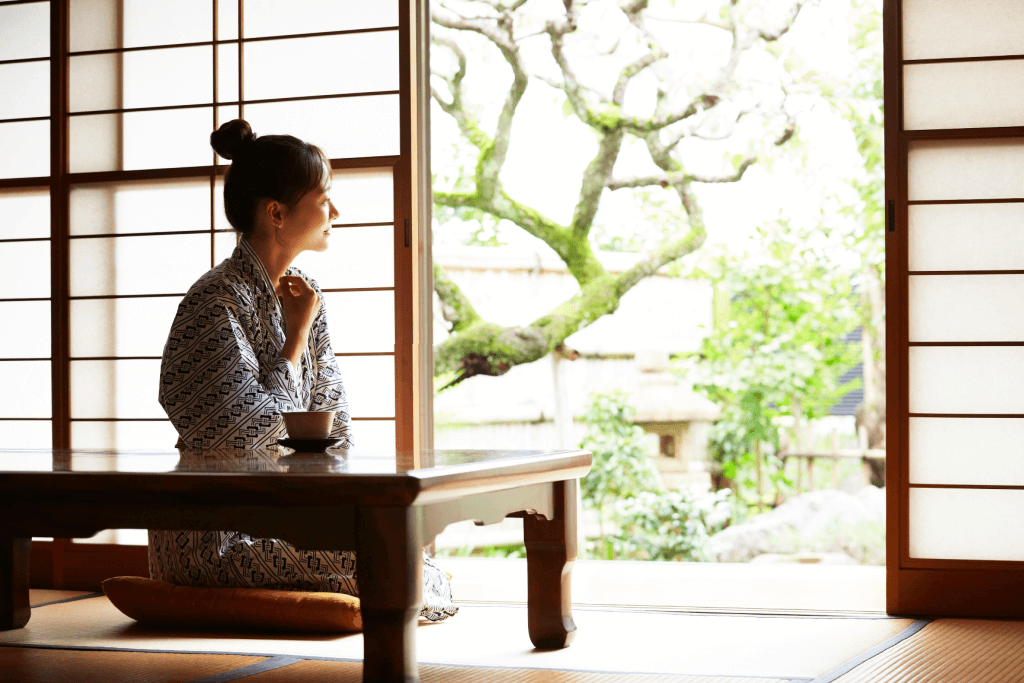
Ryokan must be an ideal accommodation choice when traveling in Japan, especially in areas outside major cities like Tokyo or Kyoto. While there are fewer ryokan options in urban areas, they are prevalent and distinctive in many rural villages throughout Japan. These traditional inns are a place where travelers can immerse themselves in the cultural ambiance of Japan.
What is a ryokan?
Ryokan is the name of a traditional Japanese inn. They originated during the Nara period (710-784) when people back then didn’t have easy ways to travel between towns and just wanted a safe spot to stay for the night and eat.
Most ryokan consist of a main building (honkan) and secondary buildings (shinkan/bekkan). The staff working here, also called nakai in Japanese, often dress in traditional kimonos or yukata and welcome guests with warm smiles. They also prepare comfortable and easy-to-wear yukata sets in each room for the guests.
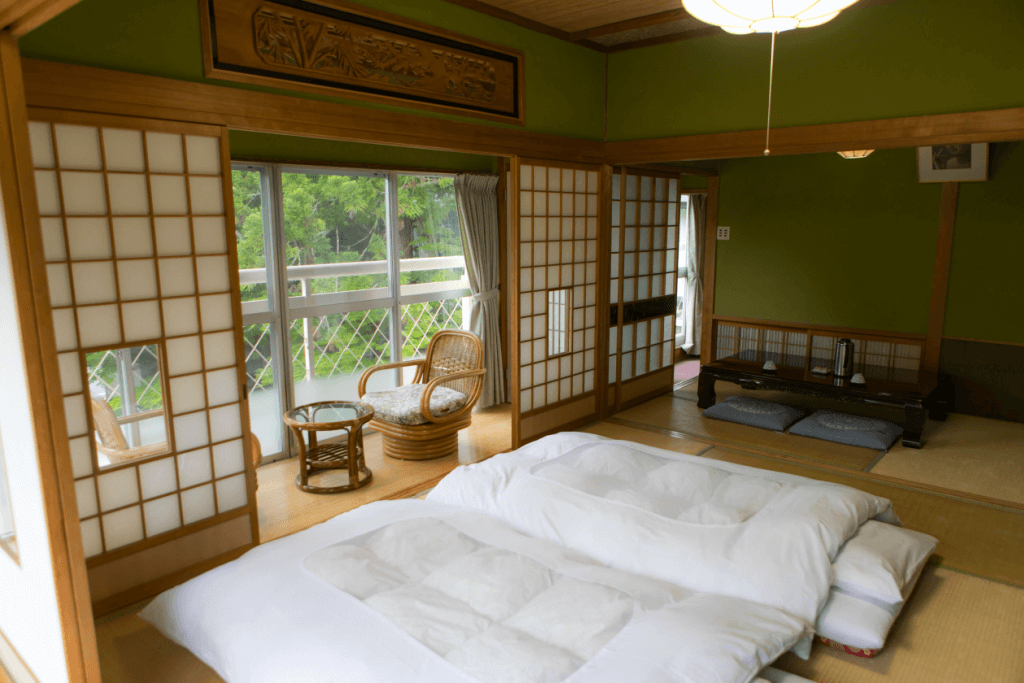
The interiors of these establishments often feature Japanese home decor elements steeped in tradition, such as lanterns, shoji (sliding doors/folding screens), bonsai trees, and ikebana flowers. Additionally, the rooms of ryokan also include traditional furniture like tatami mats, futon (sleeping mattresses), chabudai (short-legged tables), and zabuton (seat cushions).
Moreover, some ryokan establishments include onsen facilities. Thus, there is a separate area for natural hot springs, or rotenburo (open-air bath), apart from the lodging. However, for premium rooms or upscale ryokan, there might be a private onsen where you can completely relax in an exclusive space.
What can you eat at a ryokan?
For breakfast, you’ll be served a complete Japanese-style meal. It’ll undoubtedly include rice, miso soup, and various pickle types such as daikon (radish), nasu (eggplant), or umeboshi (pickled plum). Protein-rich dishes may contain natto, onsen tamago (half-boiled eggs), tofu, or grilled fish. Furthermore, a small fresh salad contributes to a wholesome and nutritionally balanced breakfast.
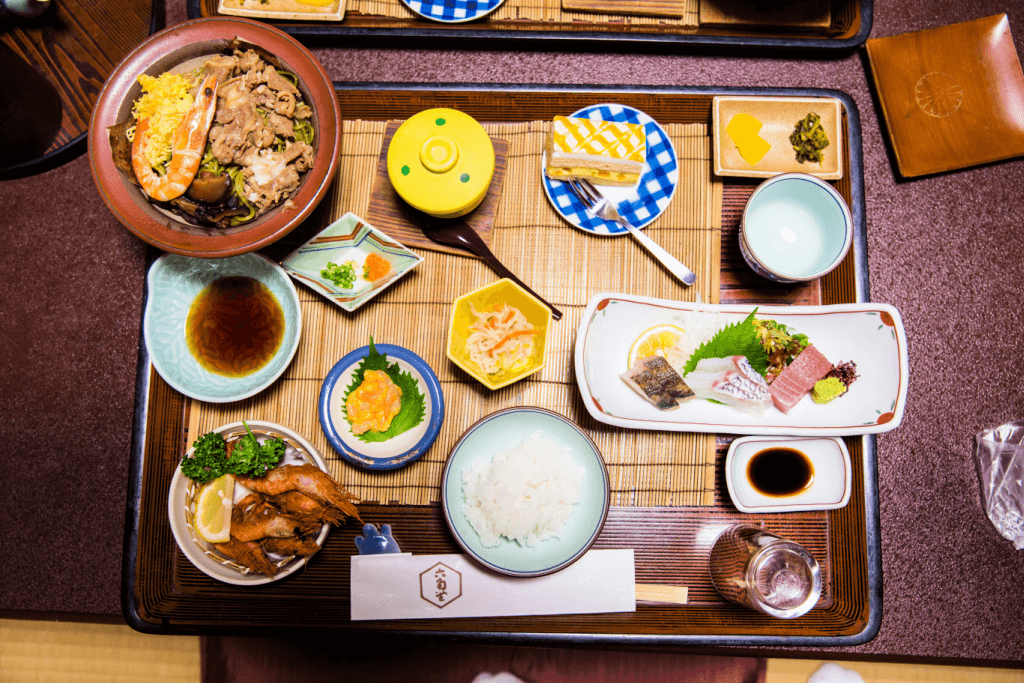
Compared to breakfast, dinner at a ryokan is more elaborate and consists of various dishes. This style is called kaiseki ryouri, a traditional multi-course Japanese dinner. The dishes in kaiseki come in four main types: starters, main courses, shokuji, and desserts. The starter may include some bite-sized appetizers or tempura (deep-fried food).
You’ll also fall in love with cuisine deeply rooted in Japanese culture through the main courses, namely sashimi, yakimono (grilled dishes), nimono (simmered dishes), and chawanmushi (steamed egg dish). Finally, you’ll be able to enjoy traditional sweet dishes with fruits and red beans like desserts to conclude a satisfying dinner.
Are you interested in enjoying even more traditional Japanese snacks? Try out Sakuraco! Sakuraco delivers traditional Japanese snacks, teas, sweets, and snacks from Japan to your door every month so that you can enjoy Japan’s taste anywhere!
Three famous Japanese inns
Gora Kadan (Hakone)
Gora Kadan used to be a relaxing summer getaway for the Imperial Family. This traditional Japanese inn is central to the fascinating Hakone National Park. The style here mixes old Japanese traditions with modern luxury excellently. The building is fantastic, with long wooden hallways that give you amazing views of the valley. The inn also has its outdoor onsen designed to fit in with the natural beauty around.
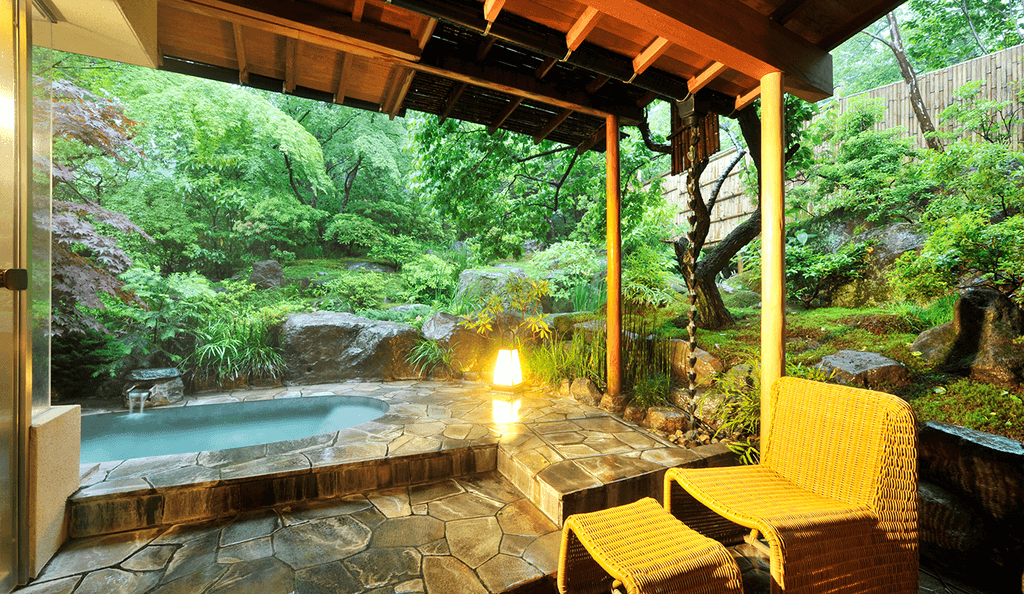
Even though the rooms in Gora Kadan are equipped with modern TVs and air conditioning, they still have a Japanese style that makes them unique. Each room lets you look out at the peaceful Fuji-Hakone-Izu National Park. In addition, many rooms even have private baths with great views. There’s also a spa where you can get massages and treatments after a long day of exploring.
Hiiragiya (Kyoto)
Nestled in the heart of Kyoto, Hiiragiya is a venerable traditional Japanese inn established in 1818. With its understated elegance and commitment to preserving tradition, Hiiragiya offers a quintessential ryokan experience. Guest rooms feature tatami mat flooring, sliding paper doors, and exquisite garden views, immersing visitors in traditional Japanese living.
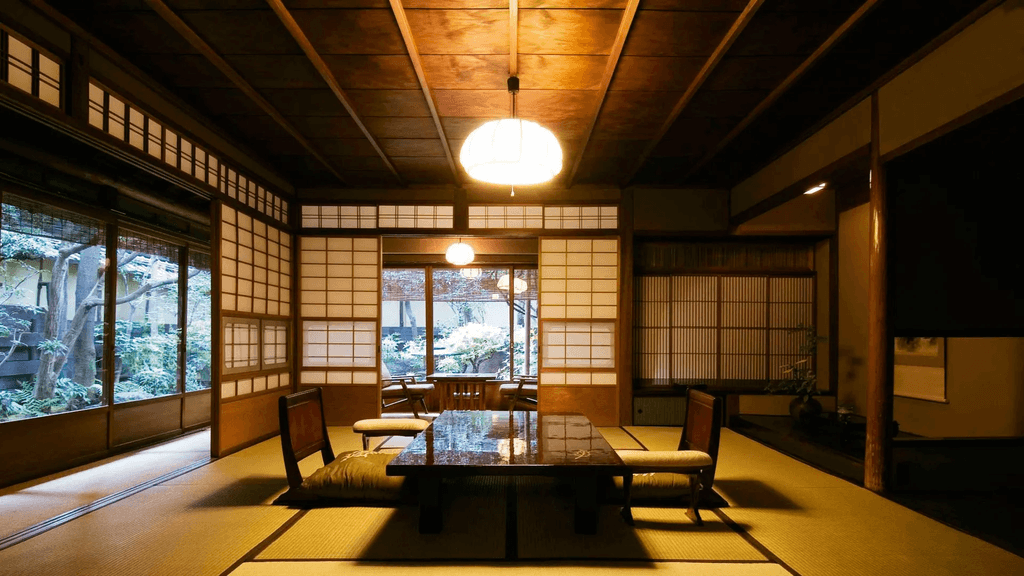
What truly sets Hiiragiya apart is its devotion to kaiseki cuisine, an artful and seasonally inspired multi-course dining experience. Each dish is meticulously crafted and presented, reflecting the ryokan’s commitment to preserving Kyoto’s culinary heritage. Hiiragiya Ryokan’s dedication to offering an authentic and immersive cultural experience, combined with its exquisite kaiseki cuisine, makes it a must-visit destination for those seeking the essence of Japanese hospitality in Kyoto.
Beniya Mukayu Luxury Ryokan (Ishikawa)
Beniya Mukayu Luxury Ryokan is an exquisite ryokan located in the middle of the peaceful onsen area of the southern Ishikawa Prefecture. As each room here has its own private open-air onsen bath, you can surely enjoy a nice soak while looking at a stunning Japanese garden.
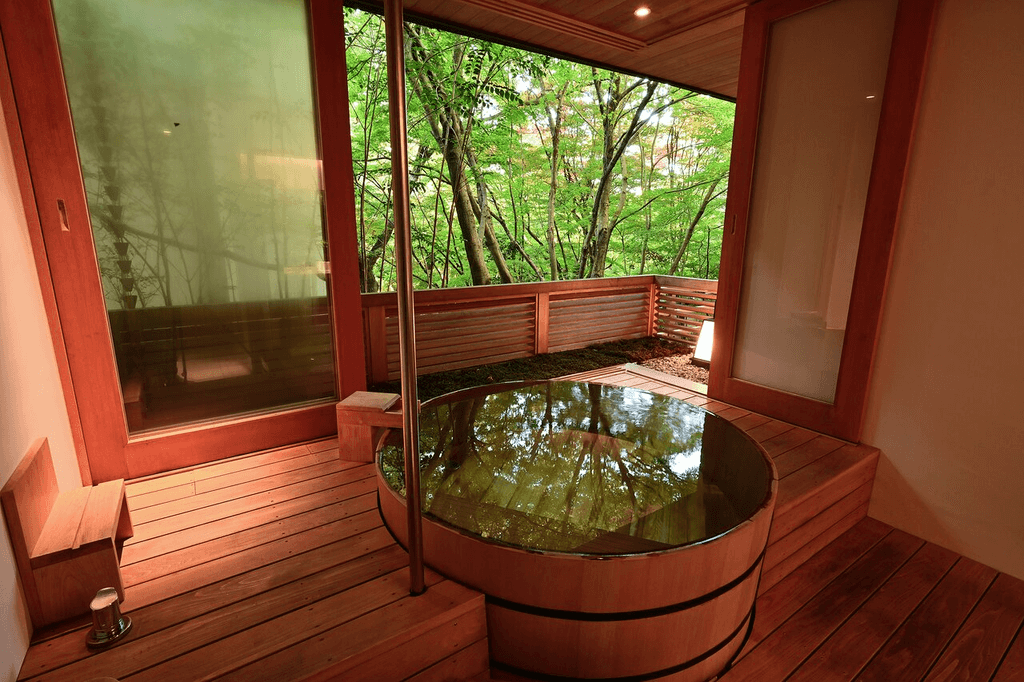
The restaurant of this fancy Japanese inn serves terrific meals. It offers exclusive dinners in the traditional Kaga style using the best local ingredients. Besides, you can also do many fun things at Beniya Mukayu, like making soba noodles or hiking at Mt Ozuchi. However, if you want to relax instead, consider joining a classic tea ceremony or having refreshing spa treatments.
Overall, ryokan is not just a traditional building for travelers to spend the night during their journey; it’s a space that preserves and showcases the quintessence of Japanese culture. From traditional decoration to delicious cuisine and a tranquil atmosphere, staying at a ryokan always offers a distinctive glimpse into the heart of Japanese heritage. Do you have any experience with ryokan in Japan? Feel free to comment and share your story and thoughts below!

Discover authentic flavors with Sakuraco
Get Sakuraco 

Discover authentic flavors with Sakuraco
Get Sakuraco 
Related Articles

Steam Train in Shizuoka: Riding the Oigawa Railway
For travelers who love history, beautiful views, and cozy retro vibes, this steam train is one of Shizuoka’s most charming treasures, with some of the best views. If you want to know more about this train, keep reading below!

Nara Japan: The Amazing Legend of the Sacred Dragon
In Japanese culture, dragons are spiritual beings that represent strength, prosperity, and a harmonious balance with the natural forces. Nara, Japan, has a unique story associated with sacred ponds and revered shrines throughout the region.

Nambu Tekki: Morioka’s Amazing Iron Craft
In the historic city of Morioka, Iwate Prefecture, a craft with over 400 years of history continues to captivate with its rustic beauty and practical charm. Nambu tekki, or Nambu cast iron, refers to traditional ironware, such as teapots, kettles, and decorative pieces, that embody the spirit of Tohoku craftsmanship.

Ebisu: The Cheerful Guardian of Luck and Prosperity
Religion in Japan involves a dizzying array of spirits and beings. These gods are inspired by ancient tales and used to symbolize nature’s bounty. However, they also profoundly impact daily life and are often sought out for help in challenging times



